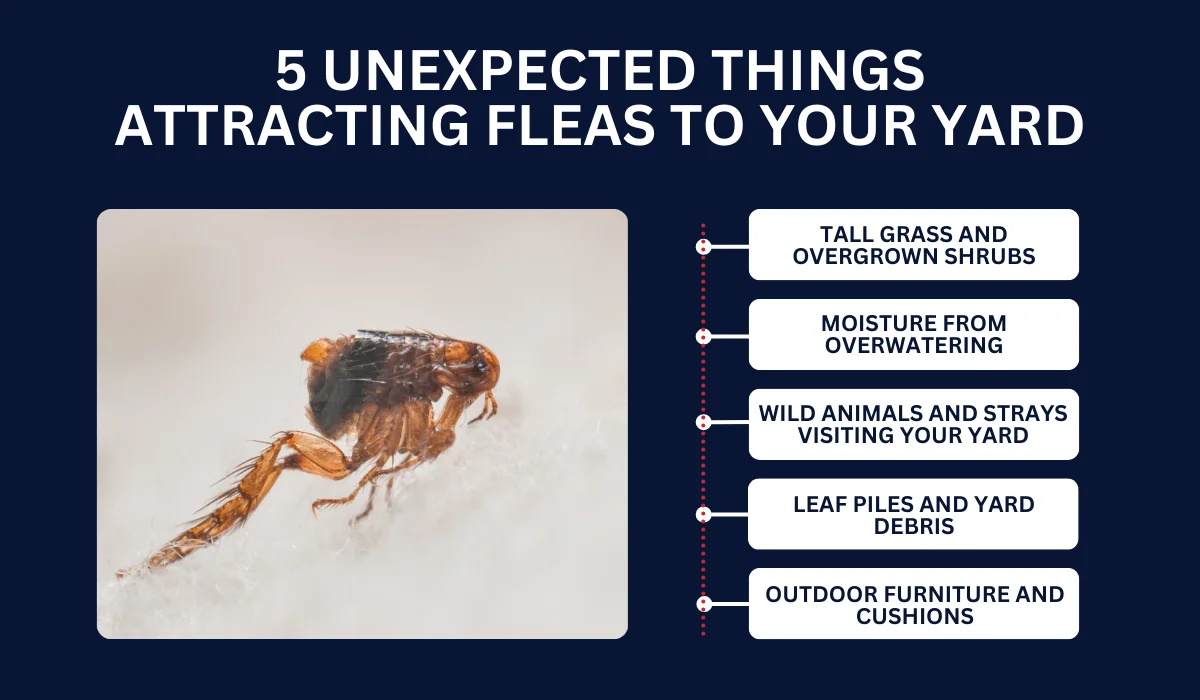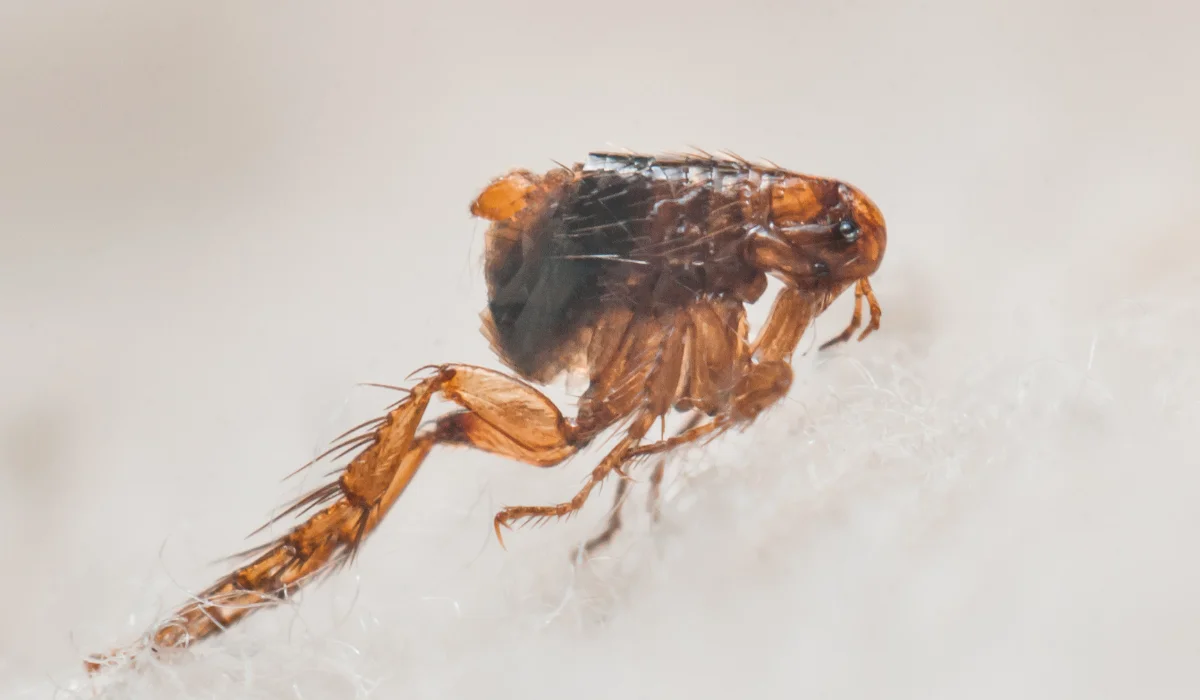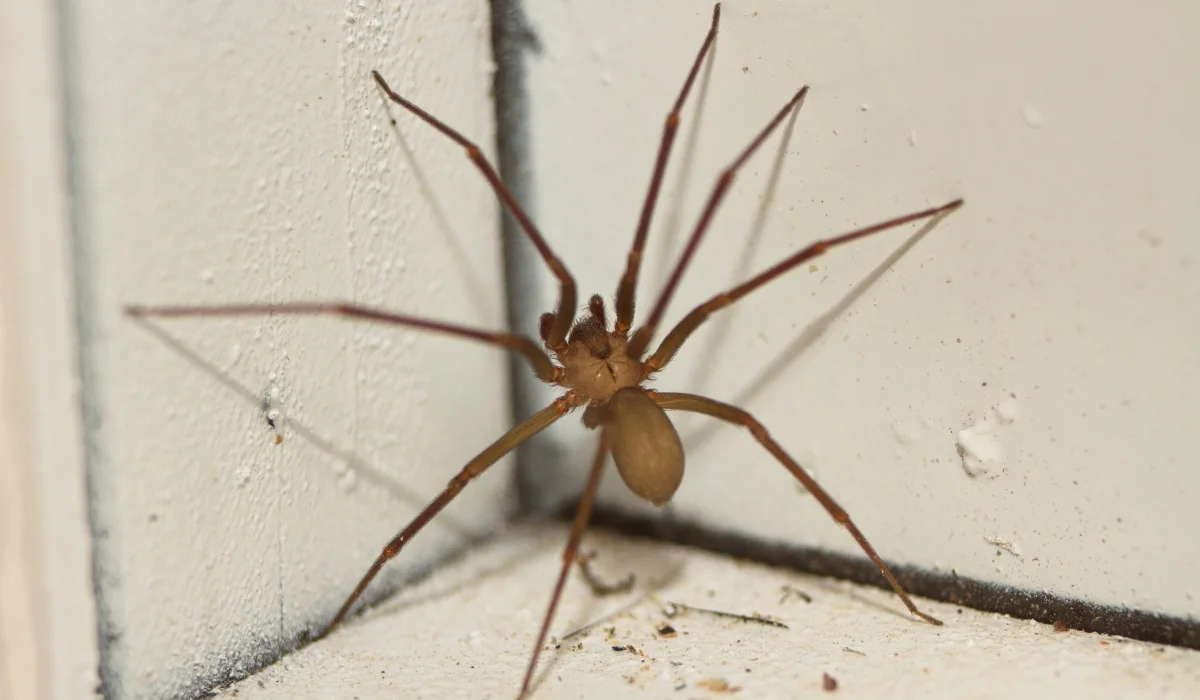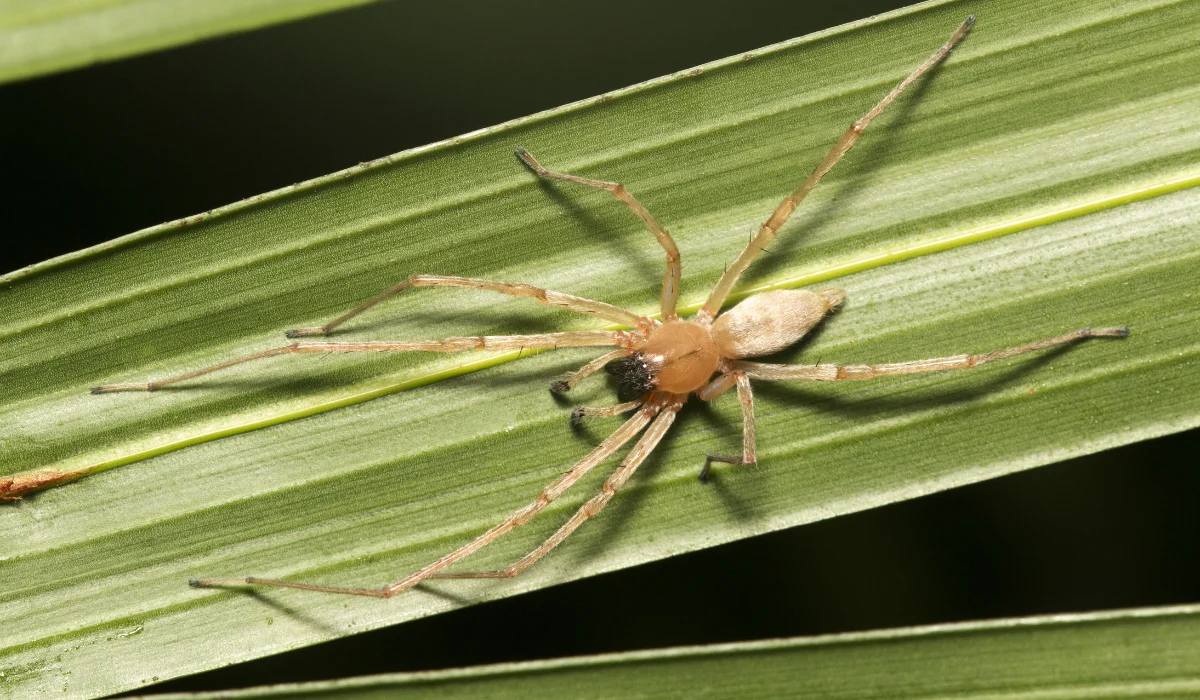Why do fleas invade your yard in the first place? Uncovering the reasons behind this issue can help keep these tiny invaders away. This situation makes it important for homeowners with pets to know what attracts them.
Keep reading and discover how to get rid of fleas in your garden.
Key Takeaways
- Fleas are drawn to tall grass, overgrown shrubs, and yard debris where they can hide and breed.
- Excessive moisture from overwatering creates the perfect environment for fleas to survive.
- Wildlife, stray animals, and outdoor furniture with cushions can bring fleas into your yard.
- Regular lawn care, proper watering, and flea treatments for pets and yards can help prevent flea problems.
- Professional pest control can make sure a flea-free home if DIY treatments don’t work.

1. Tall Grass and Overgrown Shrubs
Fleas love cool, shady areas to hide and breed. Tall grass or overgrown shrubs provide the perfect refuge. These environments offer protection from direct sunlight and maintain steady humidity levels.
Also, such vegetated areas are common hiding spots for egg-laying to increase flea populations. Regular lawn mowing keeps the grass short, reducing suitable areas to hide and breed.
2. Moisture from Overwatering
If a yard is frequently watered, it can cause excessive moisture, creating an ideal breeding ground for fleas. The puddles or standing water make sure flea eggs, larvae, and pupae survive.
Drying out these areas by balancing water usage can disrupt life cycles. Water your lawn early in the morning so it dries quickly under the sun. Also, avoid watering in late afternoons or evenings.
3. Wild Animals and Strays Visiting Your Yard
Raccoons, squirrels, and even stray cats or dogs can bring fleas into yards. These critters can carry adult fleas, introducing them to new environments where they lay eggs and multiply.
Reducing critter visits is essential for reducing flea introduction and spread into your yard and pets. Securely close trash cans and compost bins to deter scavengers looking for food sources. Consider installing fencing where necessary.
4. Leaf Piles and Yard Debris
Fleas naturally gravitate towards leaf piles and other yard debris. These areas provide shade and moisture, especially for female fleas that need to survive. If neglected in yard maintenance routines, they become breeding grounds.
That’s why wood piles should be managed as part of flea prevention. Lift wood off the ground and store it away from home. Gather leaves and dispose of them instead of leaving them in corners. Then, use a rake to aerate the soil underneath.
5. Outdoor Furniture and Cushions
Outdoor furniture, especially with fabric cushions, can inadvertently become a home for fleas. Cushions often trap heat and moisture, allowing them to thrive and multiply. Also, pets frequently resting outdoors provide them with an accessible blood meal.
Consider using protective covers for furniture, particularly when not used for extended periods. Rotating cushions and shaking out pads also makes sure that no crevice remains a hiding spot.
HOW TO PREVENT FLEAS IN YOUR YARD
Use Flea Treatments for Pets
Treating pets is a key aspect of year-round flea control. Pets often carry fleas into the yard, making regular treatment necessary to get rid of them. Consider the following flea treatment options:
- Oral Medications: These are usually given monthly to kill adult fleas and prevent eggs from hatching.
- Topical Treatments: Applied directly to the pet’s skin, offering protection for several weeks.
- Flea Collars: Offers protection by releasing active ingredients but may need to be replaced every few months.
- Flea Shampoos: A quick, effective way to kill fleas on contact, though they may need frequent use for full prevention.
Apply Yard-Appropriate Flea Treatments
Direct yard treatments can disrupt the flea life cycle. It’s advisable to consult with professional exterminators for the best solutions. In the meantime, you can explore these methods:
- Bug Sprays: Bug sprays with pyrethrins or permethrin can control fleas in your yard. But choose sprays labeled as safe for outdoor use around pets, family members, and other wildlife.
- Natural Repellents: Boric acid, diatomaceous earth, or vinegar can keep fleas away from your yard without harming beneficial insects like bees and butterflies.
Clean-Up Dead Wildlife
Wild animals are a common source of fleas, and when they die, your pet might find them before you do. Check under your home, under debris, and around your yard to make sure any dead animals have been cleaned up.
Since this is a health hazard, be sure to call your city’s sanitation department to deal with this issue promptly and safely!
WHEN TO CONSIDER PROFESSIONAL PEST CONTROL
If your flea problem worsens after several weeks of OTC treatments, contacting a pest control company is advisable. This is especially true if these blood-sucking pests have invaded your home or other living spaces.
Whether you’re in Baton Rouge or New Orleans, seeking expert help should be easy. For immediate intervention for a severe infestation, let Lajaunie’s flea control specialists tailor a solution that’s right for your home.
For more information about our services, visit our service page.
 By: LaJaunie's Pest Control
By: LaJaunie's Pest Control 


